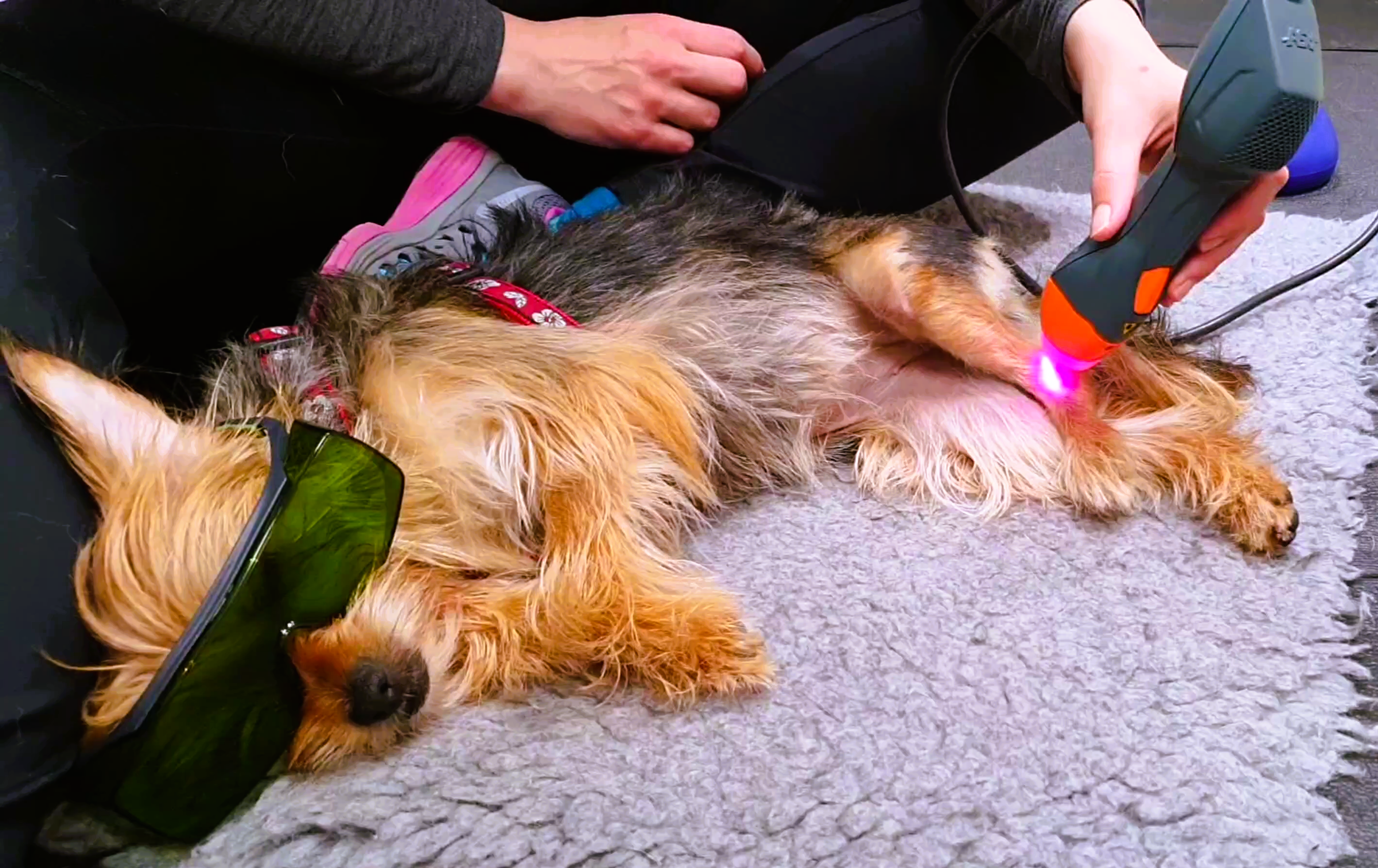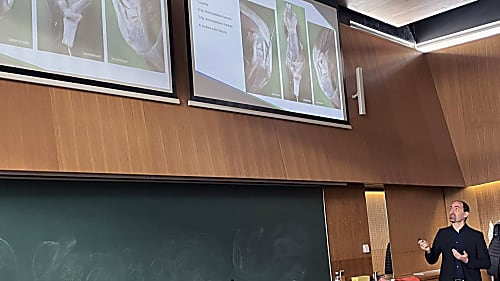Where You Could Hear from Us: Lectures on 3D Technology
The application of 3D technologies in veterinary practice is still considered novel, which is why it is important for us to participate in its popularization.
Luca Rostás: hydrotherapy, therapeutic ultrasound, magnetic and light therapy, electrotherapy and a range of gymnastics equipment complement manual treatments.
Am I right that personalized treatment is essential in rehabilitation?
Yes, it’s absolutely true. Of course, there are protocols but every small animal is a different character and every locomotor problem is unique. Even if two patients have the same diagnosis, their symptoms can be very different, so their treatment shall also be different.
How can you find the right method for each animal?
We strove to ensure that both of our therapy rooms are equipped with physiotherapy equipment as much as possible. However, it is even more important that our team at Ebfizio consists of professionally dedicated, highly knowledgeable and empathetic members, so we can rely on our own and each other's experience. Furthermore, of course, we continuously participate in professional training.
What are the most important directions in small animal physiotherapy, especially of dogs at the moment?
As in many other fields, there are always slightly more prominent directions: previously the focus was on physiotherapy devices, but now, for example, the role of fascia is in the focus of attention. In general, dog physiotherapy also follows the human line. However, it is important to have a rationalistic view of these focal points because we must bear in mind that complex problems require complex solutions. Unfortunately there is no magic treatment which could remedy all locomotor problems and illnesses in the long run after just one session. I think that the main direction is a non-coercive, cooperative, personalized and holistic approach to physiotherapy, which considers and treats the body and the problem as a whole.
What are the most common problems you meet in your praxis?
The most common diagnoses we encounter are spinal disc herniation, joint dysplasia, patellar luxation and the rupture of the cranial cruciate ligament in the stifle joint. Various traumatic injuries are also common, which are indicative of the way animals are treated: we work with many animal protection organizations in the rehabilitation of injured, homeless animals.
How does technological development affect this field? What special treatments can animals receive?
The development of human physiotherapy devices has a rapid effect on small animal physiotherapy as well: many of our tools are designed for human use. Nevertheless, there are also devices made specifically for animals: various electrotherapy devices, therapeutic ultrasound, laser therapy, light therapy, magnetic therapy and an underwater conveyor belt, among many other things, help our animals recover.

How do innovations like the LimesVet implants influence your field? Do they change the process of rehabilitation?
In Virág’s case, for instance, our starting point was a practically perfect anatomical situation. Earlier it was simply unimaginable that physiotherapy can be started with so much prospect. Of course, her treatment required a lot of attention: for example, the contraindicated and indicated treatments were almost the opposite in her case. Rehabilitation requires a high degree of flexibility and creativity in the case of custom-made implants. We cannot wait to treat small animals coming with similarly special solutions because every case is very exciting.
How and why is it important in your profession that small animals cooperate and pet owners take responsibility?
Both factors are of crucial importance. Sooner or later we find the way to small animals, it usually leads through their stomach. However, it is a bit more difficult with their owners, they cannot be influenced by delicious snacks... Unfortunately, if the owner is not cooperative, it practically means that the therapy is doomed to fail. We try to give comprehensive information to the owners coming to us so that they understand why we do what we do and why we recommend it. We can witness a high degree of development in keeping animals in this respect too, but unfortunately we still do not know our dogs and their communication well enough. Sometimes it still happens that owners cannot even recognise the signs of serious pain in their dogs.
Turning to the future of physiotherapy, are there any “revolutional” methods or tools which have a big impact on your field?
Undoubtedly, the development of veterinary medicine also has a great influence on physiotherapy, as well as the spread of special implants and the presence of modern diagnostic devices, among many other things. It is equally important that there is more and more scientifically supported knowledge about the behaviour of dogs. Also, we hope that the various technical innovations will soon help us in the field of rehabilitation, prevention and sports dogs. Neuroprostheses, implants, systems capable of analysing movement and robotics open up unimaginable horizons in our profession as well.

The application of 3D technologies in veterinary practice is still considered novel, which is why it is important for us to participate in its popularization.

Precise planning, safer surgeries! Integrate 3D technology into your veterinary practice and take advantage of the innovative solutions we offer.

Professional chefs who have hundreds of recipes in their head and decades of experience in their hands are always able to invent new recipes by making use of the accessible ingredients and conforming to the trends. They experiment with either new ingredients or methods but it can also happen that they revamp the old and conventional dishes and they serve them in a more modern form.
Patient-specific surgical equipment
Personalized implants
Diverse anatomical visualization
Patient-specific surgical equipment